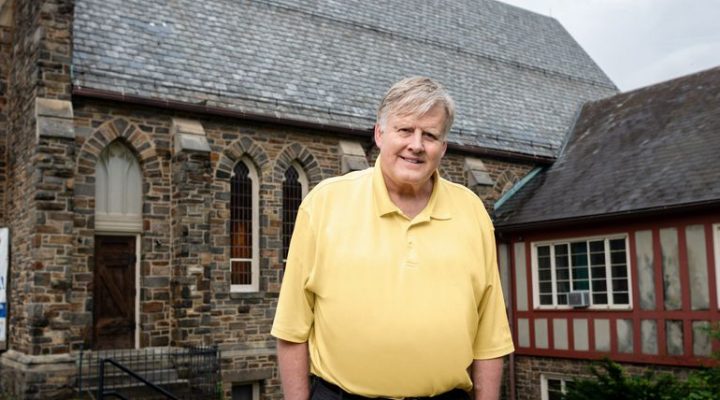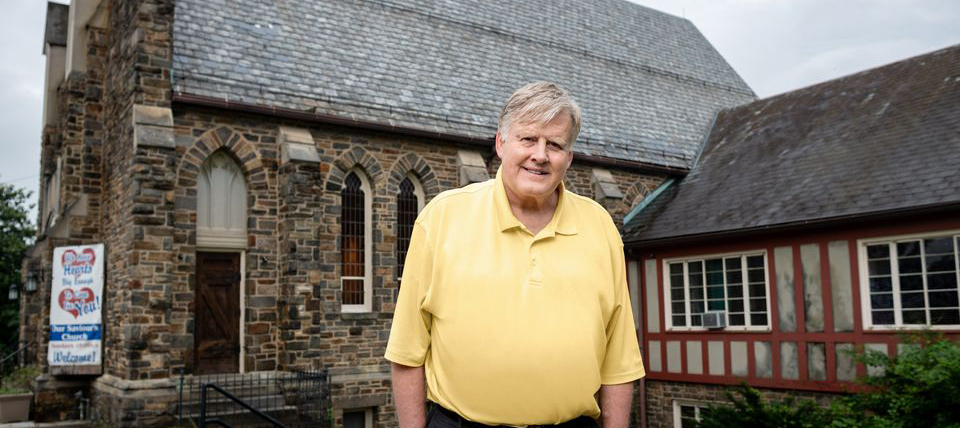Church property costs $7 to $10 per square foot annually to operate, which can mean $70,000 to $100,000 for a modest 10,000-square-foot property, according to Rick Reinhard, who unexpectedly has become an authority on repurposing church real estate.
Reinhard, a 1982 graduate of the Jones School of Business at Rice University, recently wrote about his newfound expertise for his alma mater’s business magazine. He now serves as principal of Niagara Consulting Group, based in Montgomery County, Md., and is co-author of “Transforming Empty Churches into Affordable Housing Takes More than a Leap of Faith” in the May 5 issue of Planning with Nadia Mian of the Bloustein School of Planning and Public Policy at Rutgers University.
The simple math of what it costs to maintain a church property must factor into decisions about whether declining churches stay open or close, he says.
“A congregation with a median age of 75 will soon find itself shy of members. Spending a quarter of the organization’s cash reserves year after year is unsustainable, no matter how well the investment portfolio performs. Giving short shrift to the data often results in sudden, sad decisions to close and pound a ‘for sale’ sign in the front lawn, with little forethought.”
“Spending a quarter of the organization’s cash reserves year after year is unsustainable, no matter how well the investment portfolio performs.”
From a faith and business perspective, American religion needs a new model for evaluating and repurposing church real estate, he contends.
“Houses of worship in the United States are emptying out, from denomination to denomination, from coast to coast. What we do about them will shape not only our faith institutions, but also our communities for decades to come.”
The numbers are staggering: “We may be looking at the closing of up to 100,000 of the estimated 400,000 houses of worship in the United States. Canada and Western Europe face the same challenge,” he writes. “This decline presents a dilemma for our houses of worship, as well as our towns and cities.”
Reinhard says he never imagined he would use his business degree the way he now does.
He previously led city center revitalization organizations in Richmond, Buffalo, Atlanta, Northern Ireland and Washington, D.C., served as a mayoral chief of staff, a real estate developer and a fellow at Harvard’s Graduate School of Design. But seven years ago, his career “took a sharp left turn,” says.
A United Methodist pastor friend needed help with strategic planning, fundraising, investments, communications and properties, including a building directly across from the U.S. Capitol and the Supreme Court. He took the challenge and began to learn.
Three years later, he moved to New Jersey to lead a United Methodist-affiliated organization to develop strategies for its $500 million in church real estate spread across the state. Then when COVID hit, he became an emergency management leader, raising $8 million in federal funding for 530 churches to keep food pantries and other human services operating.
All that leads him to a unique perspective on churches and their real estate holdings, he says.
“How can we rethink these spaces to serve the needs of religious organizations and their communities — sometimes in ways neither ever imagined?”
“After a first career in urban revitalization and a second career in the faith community, I find myself on the front lines of this critical challenge: How can we rethink these spaces to serve the needs of religious organizations and their communities — sometimes in ways neither ever imagined?”
One existing trend COVID accelerated is that houses of worship no longer need to be neighborhood based because people can connect via the internet to services anywhere in the world, he explains.
“The COVID-19 pandemic has encouraged churchgoers to stay home and view online. And much like in the retail and financial services sectors, churches have migrated toward the mega, the online and, at the other end of the spectrum, small but customized offerings.
“This perfect storm has produced a profound mismatch between sparse congregations and cavernous properties. Congregations cannot afford their real estate, whose neglected roofs, HVAC systems and grounds often lead to further disinvestment.”
Neither clergy nor city councils are prepared for this new trend. But developers and designers are on the lookout — motivated more by profitability than community needs or environmental, social and governance factors, he says.
“In cities like New York, San Francisco and Houston, real estate developers chomp at the bit to acquire emptying houses of worship and redevelop them into luxury residences. First United Methodist Church in downtown Miami sold to a developer for $55 million. Even if that is a smart move to make a massive profit in large cities teeming with tourism and business, luxury isn’t a solution in the heartland and smaller cities. Closed houses of worship can remain empty for years or decades. According to its planning director, Gary, Ind., population 68,000, suffers from more than 250 empty churches.”
“The average urban historic church contributes to the community more than $140,000 annually in goods and services and delivers an annual economic impact of $1.7 million.”
These empty church buildings represent more than they appear, Reinhard explains. “My colleagues at Partners for Sacred Places, a not-for-profit organization in Philadelphia, measured the ‘economic halo effect’ of churches that host food pantries, child care centers, self-help groups and the like. They discovered the average urban historic church contributes to the community more than $140,000 annually in goods and services and delivers an annual economic impact of $1.7 million.”
When a church closes, those community benefits also go away.
In Reinhard’s eyes, this must be seen as more than an economic problem or opportunity.
“Some might say, ‘Let churches close. Let the market decide highest and best use of their real estate.’ In high-demand real estate markets, such a philosophy can result in a missed opportunity to develop affordable housing or offer human services or arts and culture to an entire neighborhood. In low-demand markets, public intervention may be required to preserve a historic asset or prevent a community eyesore.”
He cites three examples of creative responses in the U.S. and Canada:
- Centre St. Jax, an Anglican church in Montreal, has been redeveloped to provide space for community organizations, including an agency serving immigrants, a food bank, a circus cabaret and a circus school.
- The Village @ West Jefferson in Louisville, Ky., a property of St. Peter’s United Church of Christ, is a new 30,000-square-foot mixed-use office and retail development in the historic Russell neighborhood.
- Near the Rice campus in Houston, St. Stephen’s Episcopal Church has issued a request for proposals to reconceptualize their property into a mixed-use development in Houston’s bustling Montrose neighborhood.
Working with Thomas Edward Frank, dean emeritus at Wake Forest University, Reinhard has identified “three major shifts needed for houses of worship to be successful”:
- Moving from private to public, meaning the buildings should be seen as the community’s asset, not the congregation’s club.
- Moving from simple to complex, meaning thinking of these buildings not only for Sunday worship for one group, but also for daily use by multiple groups.
- Moving from static to dynamic, meaning what worked yesterday probably won’t work today.
He puts the business problem in terms anyone who has visited a city center in the past three decades can understand: “What emptying department stores were to the late 20th century, emptying houses of worship are to our era except, thanks to the intricacies involved, the problems are greater and the opportunities more limited.”
Related articles:
How are houses of worship like retail stores? Changing channels of distribution | Opinion by Rick Reinhard
What would Jane Jacobs do? Toward a new model for houses of worship | Opinion by Rick Reinhard
7 dos and don’ts when considering the redevelopment of church property | Opinion by Rick Reinhard


